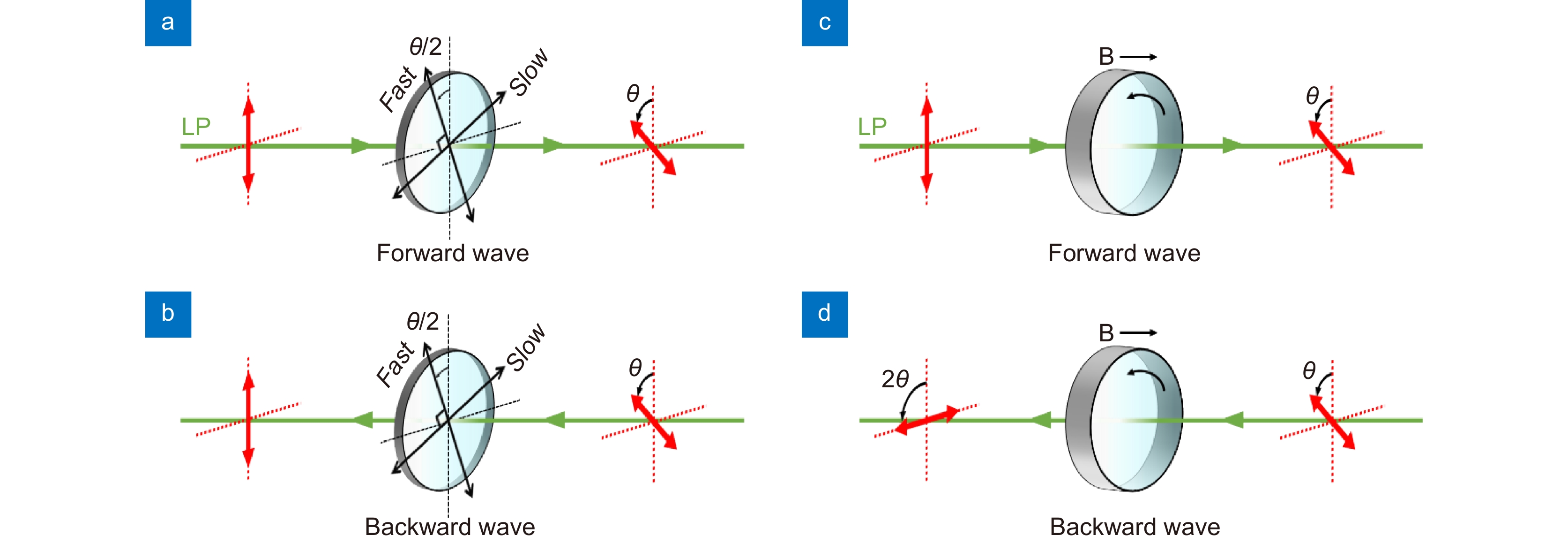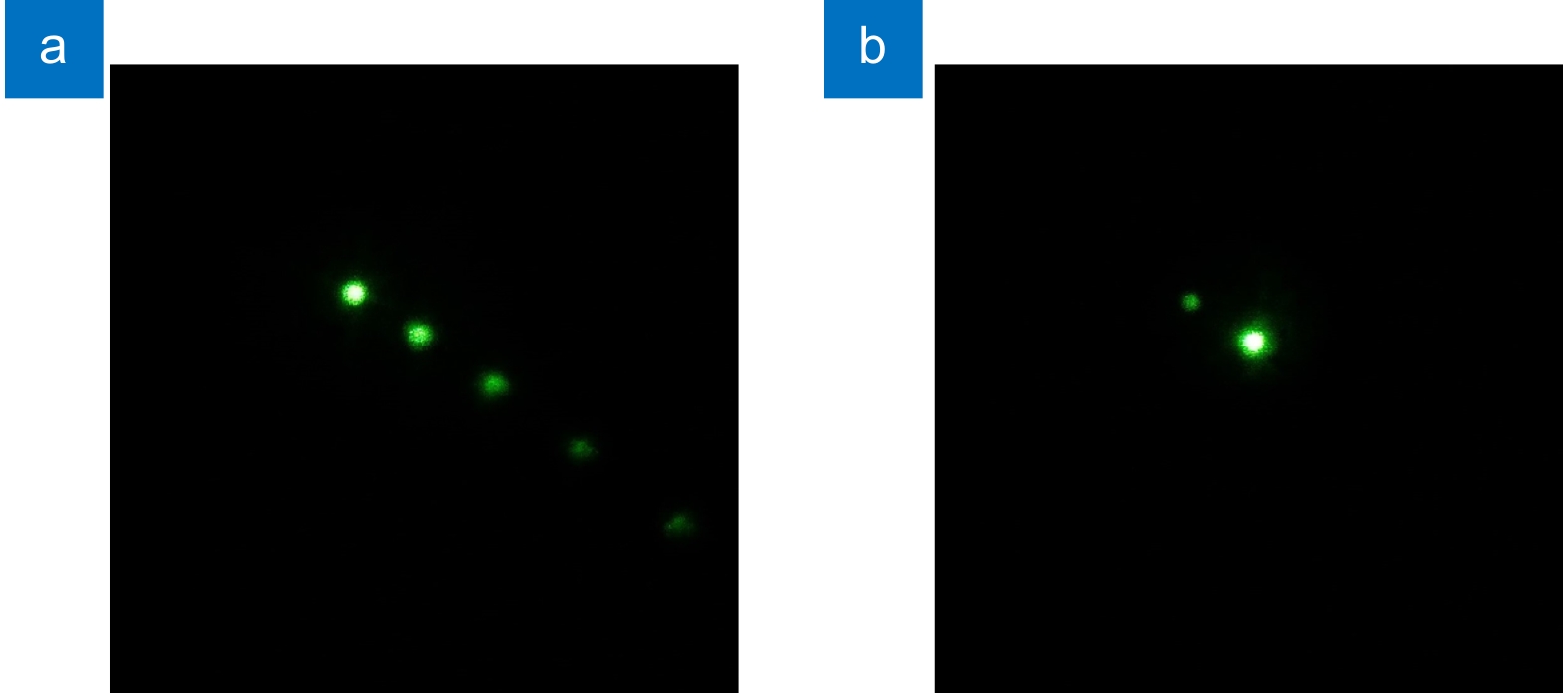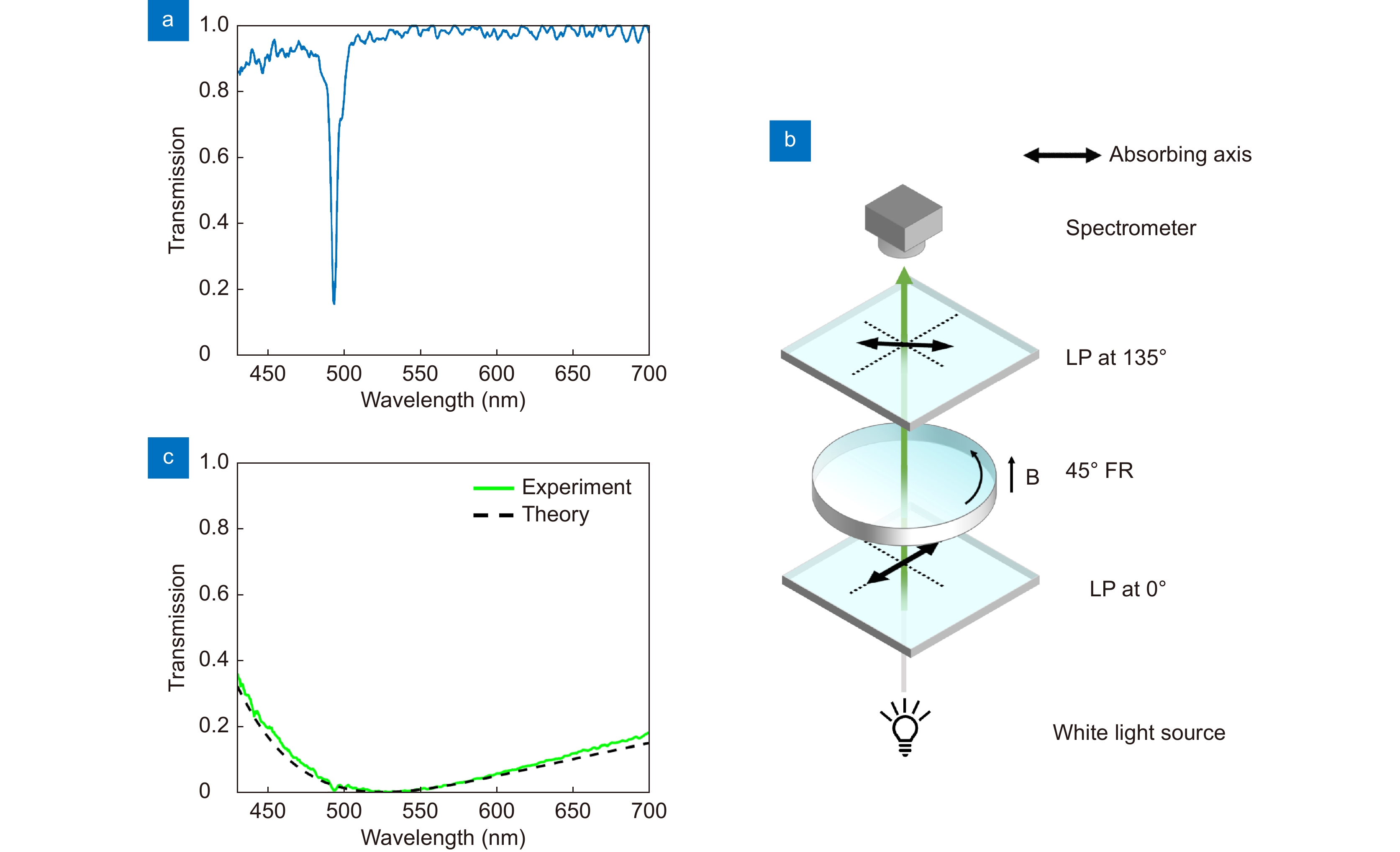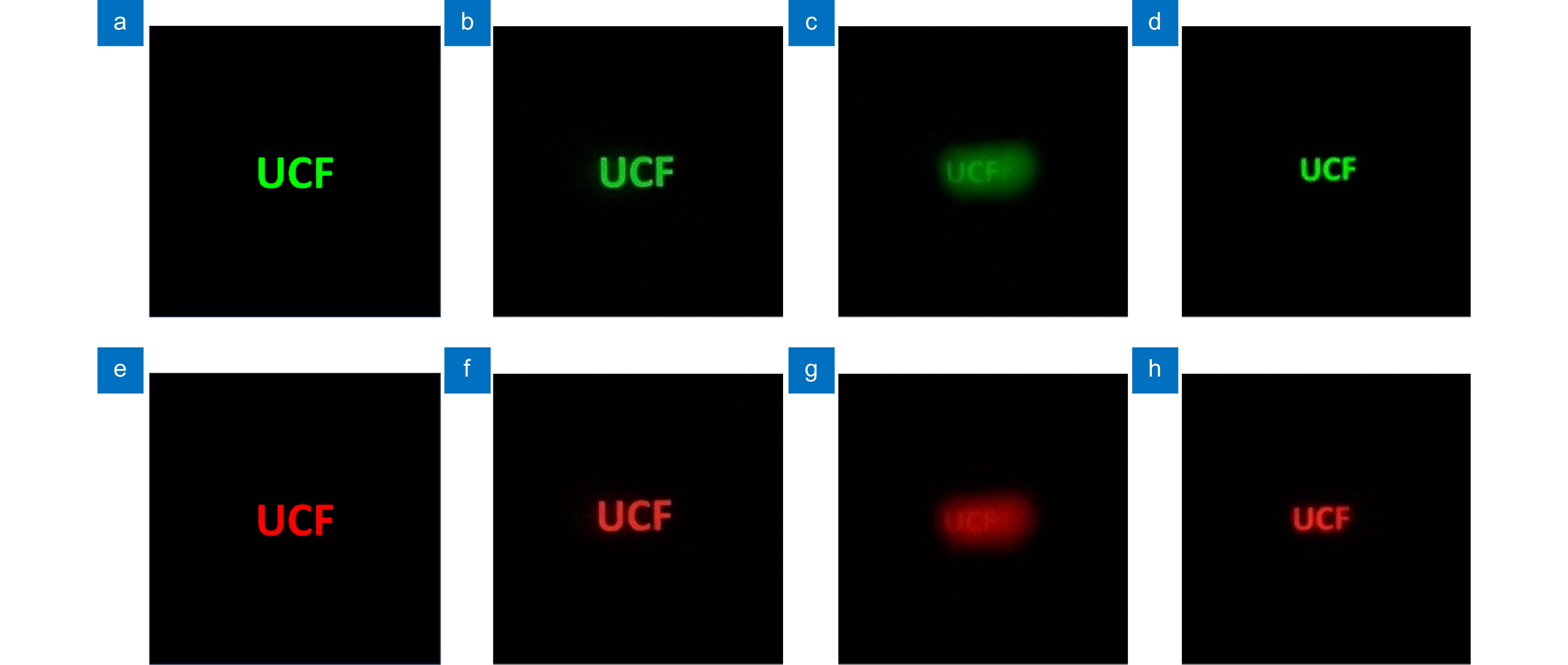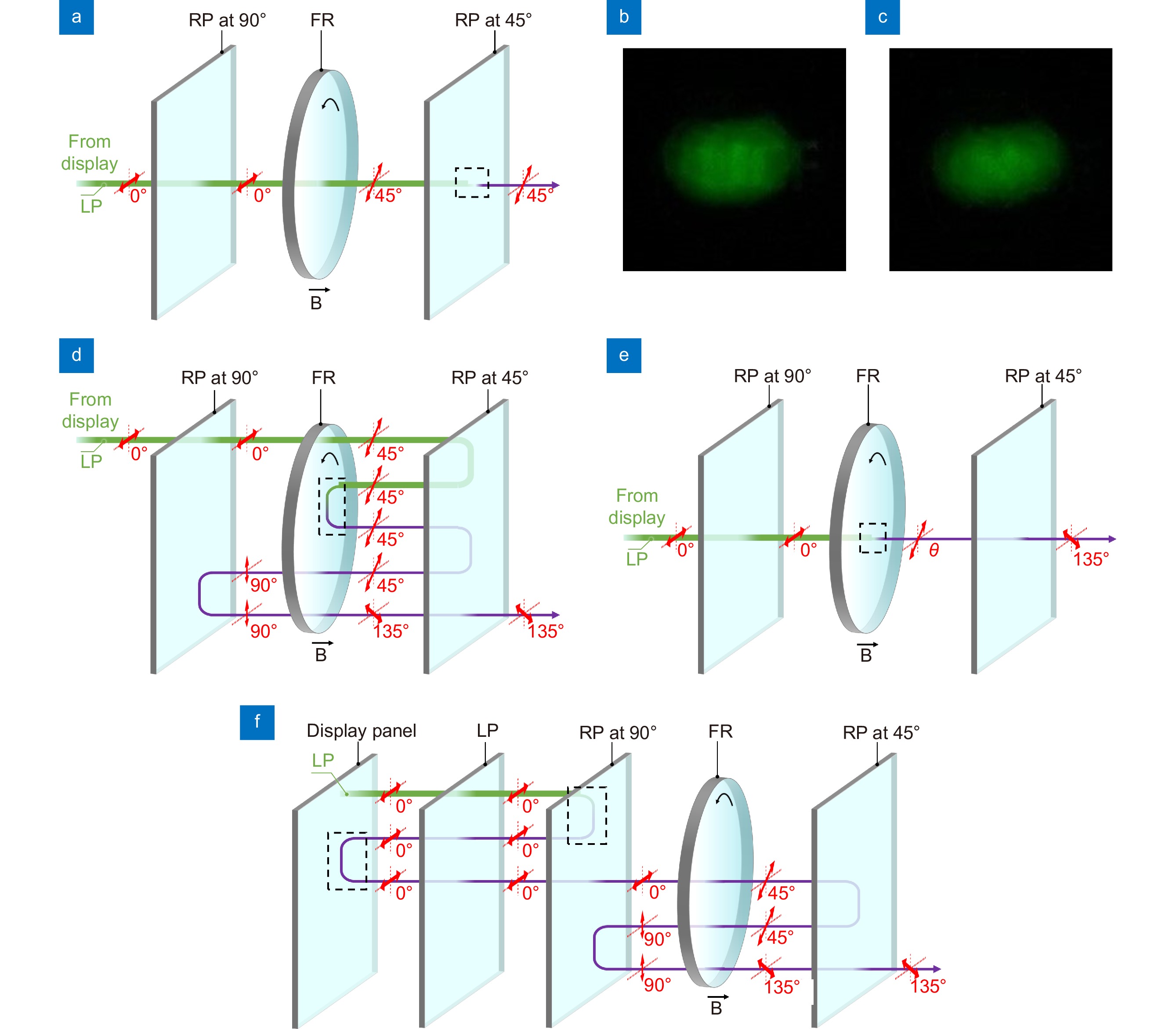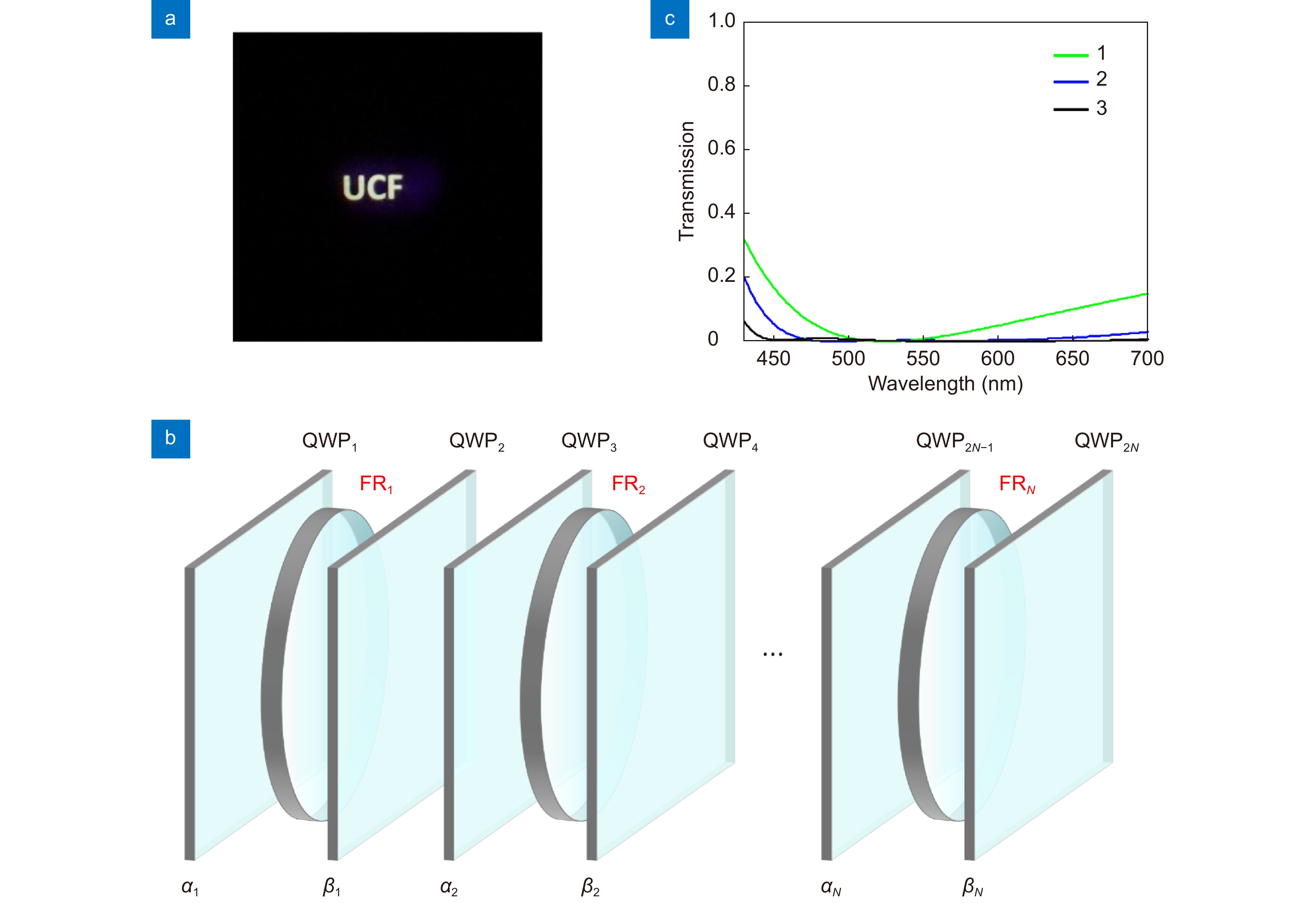| Citation: | Ding YQ, Luo ZY, Borjigin G et al. Breaking the optical efficiency limit of virtual reality with a nonreciprocal polarization rotator. Opto-Electron Adv 7, 230178 (2024). doi: 10.29026/oea.2024.230178 |
Breaking the optical efficiency limit of virtual reality with a nonreciprocal polarization rotator
-
Abstract
A catadioptric lens structure, also known as pancake lens, has been widely used in virtual reality (VR) displays to reduce the formfactor. However, the utilization of a half mirror (HM) to fold the optical path thrice leads to a significant optical loss. The theoretical maximum optical efficiency is merely 25%. To transcend this optical efficiency constraint while retaining the foldable characteristic inherent to traditional pancake optics, in this paper, we propose a theoretically lossless folded optical system to replace the HM with a nonreciprocal polarization rotator. In our feasibility demonstration experiment, we used a commercial Faraday rotator (FR) and reflective polarizers to replace the lossy HM. The theoretically predicted 100% efficiency can be achieved approximately by using two high-extinction-ratio reflective polarizers. In addition, we evaluated the ghost images using a micro-OLED panel in our imaging system. Indeed, the ghost images can be suppressed to undetectable level if the optics are with antireflection coating. Our novel pancake optical system holds great potential for revolutionizing next-generation VR displays with lightweight, compact formfactor, and low power consumption. -

-
References
[1] Kress BC. Optical Architectures for Augmented-, Virtual-, and Mixed-Reality Headsets. (SPIE, Bellingham, Washington, 2020). [2] Xiong JH, Hsiang EL, He ZQ et al. Augmented reality and virtual reality displays: emerging technologies and future perspectives. Light Sci Appl 10, 216 (2021). doi: 10.1038/s41377-021-00658-8 [3] Yin K, Hsiang EL, Zou JY et al. Advanced liquid crystal devices for augmented reality and virtual reality displays: principles and applications. Light Sci Appl 11, 161 (2022). doi: 10.1038/s41377-022-00851-3 [4] Lu YQ, Li Y. Planar liquid crystal polarization optics for near-eye displays. Light Sci Appl 10, 122 (2021). doi: 10.1038/s41377-021-00567-w [5] Ding, Y. et al. Waveguide-based augmented reality displays: perspectives and challenges. eLight 3, 24 (2023). [6] Chang CL, Bang K, Wetzstein G et al. Toward the next-generation VR/AR optics: a review of holographic near-eye displays from a human-centric perspective. Optica 7, 1563–1578 (2020). doi: 10.1364/OPTICA.406004 [7] Park HS, Hoskinson R, Abdollahi H et al. Compact near-eye display system using a superlens-based microlens array magnifier. Opt Express 23, 30618–30633 (2015). doi: 10.1364/OE.23.030618 [8] Xiong JH, Wu ST. Planar liquid crystal polarization optics for augmented reality and virtual reality: from fundamentals to applications. eLight 1, 3 (2021). doi: 10.1186/s43593-021-00003-x [9] Yang X, Lin Y, Wu TZ et al. An overview on the principle of inkjet printing technique and its application in micro-display for augmented/virtual realities. Opto-Electron Adv 5, 210123 (2022). doi: 10.29026/oea.2022.210123 [10] Li Y, Huang XJ, Liu SX et al. Metasurfaces for near-eye display applications. Opto-Electron Sci 2, 230025 (2023). doi: 10.29026/oes.2023.230025 [11] LaRussa JA, Gill AT. The holographic pancake window TM. Proc SPIE 162, 120–129 (1978). doi: 10.1117/12.956898 [12] Wong TL, Yun ZS, Ambur G et al. Folded optics with birefringent reflective polarizers. Proc SPIE 10335, 103350E (2017). [13] Geng Y, Jacques G, Brian W et al. Viewing optics for immersive near-eye displays: pupil swim/size and weight/stray light. Proc SPIE 10676, 1067606 (2018). [14] Li YNQ, Zhan T, Yang ZY et al. Broadband cholesteric liquid crystal lens for chromatic aberration correction in catadioptric virtual reality optics. Opt Express 29, 6011–6020 (2021). doi: 10.1364/OE.419595 [15] Le J, Hao B, Aastuen D et al. High resolution reflective polarizer lens for catadioptric VR optics with accommodating eye box design. Proc SPIE 12449, 124490O (2023). [16] Zou JY, Zhan T, Hsiang EL et al. Doubling the optical efficiency of VR systems with a directional backlight and a diffractive deflection film. Opt Express 29, 20673–20686 (2021). doi: 10.1364/OE.430920 [17] Hsiang EL, Yang ZY, Zhan T et al. Optimizing the display performance for virtual reality systems. OSA Continuum 4, 3052–3067 (2021). doi: 10.1364/OSAC.441739 [18] Qian Y, Yang Z, Huang YH et al. Directional high-efficiency nanowire LEDs with reduced angular color shift for AR and VR displays. Opto-Electron Sci 1, 220021 (2022). [19] Wu YH, Tsai CH, Wu YH et al. 5-2: Invited paper: high dynamic range 2117-ppi LCD for VR displays. SID Symp Dig Tech Pap 54, 36–39 (2023). doi: 10.1002/sdtp.16481 [20] Komura S, Okuda K, Kijima H. 49-4: thin and lightweight head-mounted displays with polarized laser backlights and holographic optics. SID Symp Dig Tech Pap 53, 636–639 (2022). [21] Luo ZY, Ding YQ, Rao Y et al. High-efficiency folded optics for near-eye displays. J Soc Inf Display 31, 336–343 (2023). doi: 10.1002/jsid.1207 [22] Usukura N, Minoura K, Maruyama R. Novel pancake-based HMD optics to improve light efficiency. J Soc Inf Display 31, 344–354 (2023). doi: 10.1002/jsid.1212 [23] Saleh BEA, Teich MC. Fundamentals of Photonics, Multi-Volume 3rd ed (John Wiley & Sons, Hoboken, 2019). [24] Inoue M, Levy M, Baryshev AV. Magnetophotonics: From Theory to Applications (Springer, Berlin, 2013). [25] Berent M, Rangelov AA, Vitanov NV. Broadband Faraday isolator. J Opt Soc Am A 30, 149–153 (2013). [26] Hou QC, Cheng DW, Li Y et al. Stray light analysis and suppression method of a pancake virtual reality head-mounted display. Opt Express 30, 44918–44932 (2022). doi: 10.1364/OE.476078 [27] Cheng DW, Cheng DW, Cheng DW et al. Optical design and pupil swim analysis of a compact, large EPD and immersive VR head mounted display. Opt Express 30, 6584–6602 (2022). doi: 10.1364/OE.452747 [28] Zhang ZH, Wu Z, Zhang Z et al. Characteristics and recent development of fluoride magneto-optical crystals. Magnetochemistry 9, 41 (2023). doi: 10.3390/magnetochemistry9020041 [29] Schulz PA. Wavelength independent Faraday isolator. Appl Opt 28, 4458–4464 (1989). doi: 10.1364/AO.28.004458 [30] Nelson Z, Delage-Laurin L, Swager TM. ABCs of faraday rotation in organic materials. J Am Chem Soc 144, 11912–11926 (2022). doi: 10.1021/jacs.2c01983 [31] Carothers KJ, Norwood RA, Pyun J. High Verdet constant materials for magneto-optical faraday rotation: a review. Chem Mater 34, 2531–2544 (2022). doi: 10.1021/acs.chemmater.2c00158 [32] Vandendriessche S, Van Cleuvenbergen S, Willot P et al. Giant faraday rotation in mesogenic organic molecules. Chem Mater 25, 1139–1143 (2013). doi: 10.1021/cm4004118 [33] Levy M. Nanomagnetic route to bias-magnet-free, on-chip Faraday rotators. J Opt Soc Am B 22, 254–260 (2005). doi: 10.1364/JOSAB.22.000254 [34] Karki D, Stenger V, Pollick A et al. Thin-film magnetless Faraday rotators for compact heterogeneous integrated optical isolators. J Appl Phys 121, 233101 (2017). doi: 10.1063/1.4986237 [35] Abbott RR, Fratello VJ, Licht SJ et al. Article comprising a faraday rotator that does not require a bias magnet. Patent 6770223 (2004). -
Access History

Article Metrics
-
Figure 1.
Concept of pancake optics systems. (a) Device configuration and (b) operation mechanism of conventional pancake optics system. (c) Configuration and (d) operation mechanism of double path pancake optics system. LCP, RCP, and LP represent left-handed circular polarization, right-handed circular polarization, and linear polarization.
-
Figure 2.
Schematic of reciprocal and nonreciprocal polarization rotators. Polarization rotation in (a) a reciprocal polarization rotator during forward propagation and (b) backward propagation. Polarization rotation in (c) a nonreciprocal polarization rotator through forward propagation and (d) backward propagation.
-
Figure 3.
Working principle of the proposed novel pancake optics system. (a) Polarization conversion process in the proposed novel pancake optic system with a FR. (b) A possible configuration of the proposed novel pancake optics. (c) Polarization conversion process in the proposed novel pancake optic system without a FR.
-
Figure 4.
Experiments using a laser source. The folded beams in pancake optics system (a) without FR, (b) with FR.
-
Figure 5.
Characterization of the FR in the novel pancake optics system. (a) Transmission spectrum of the FR. (b) Measurement setup for characterizing polarization rotation. LP stands for linear polarizer. (c) Measured and calculated normalized transmission spectra (zero means perfect polarization rotation) of the FR.
-
Figure 6.
Experiments using a micro-OLED panel. (a) Original image. (b) 0th order folded image and (c) 1st order image in the pancake system without a FR. (d) 1st order image in the pancake system with a FR operating in 510-550 nm. (e) Original image. (f) 0th order folded image and (g) 1st order image in the pancake system without a FR. (h) 1st order image in the pancake system with a FR operating in 603–663 nm.
-
Figure 7.
Mechanism of ghost images in the novel pancake optics system. (a) Light path of ghost images generated by the transmission of the RPs in block state. (b) Ghost images (c) and suppressed ghost images by an extra linear polarizer captured at its own focal plane. (d) Light path of ghost images caused by surface reflection of FR. (e) Light path of ghost images produced from imperfect polarization rotation in FR. (f) Light path of ghost images induced by panel reflection and reflection of the RPs in transmission state.
-
Figure 8.
Achieving broadband FR. (a) 1st order white image in the pancake system with a FR operating in 510-550 nm. (b) Broadband FR design of sequences of FRs and QWPs. (c) Spectrum of polarization rotation ability using a single piece FR, two sequences of FRs and QWPs and three sequences of FRs and QWPs.

 E-mail Alert
E-mail Alert RSS
RSS
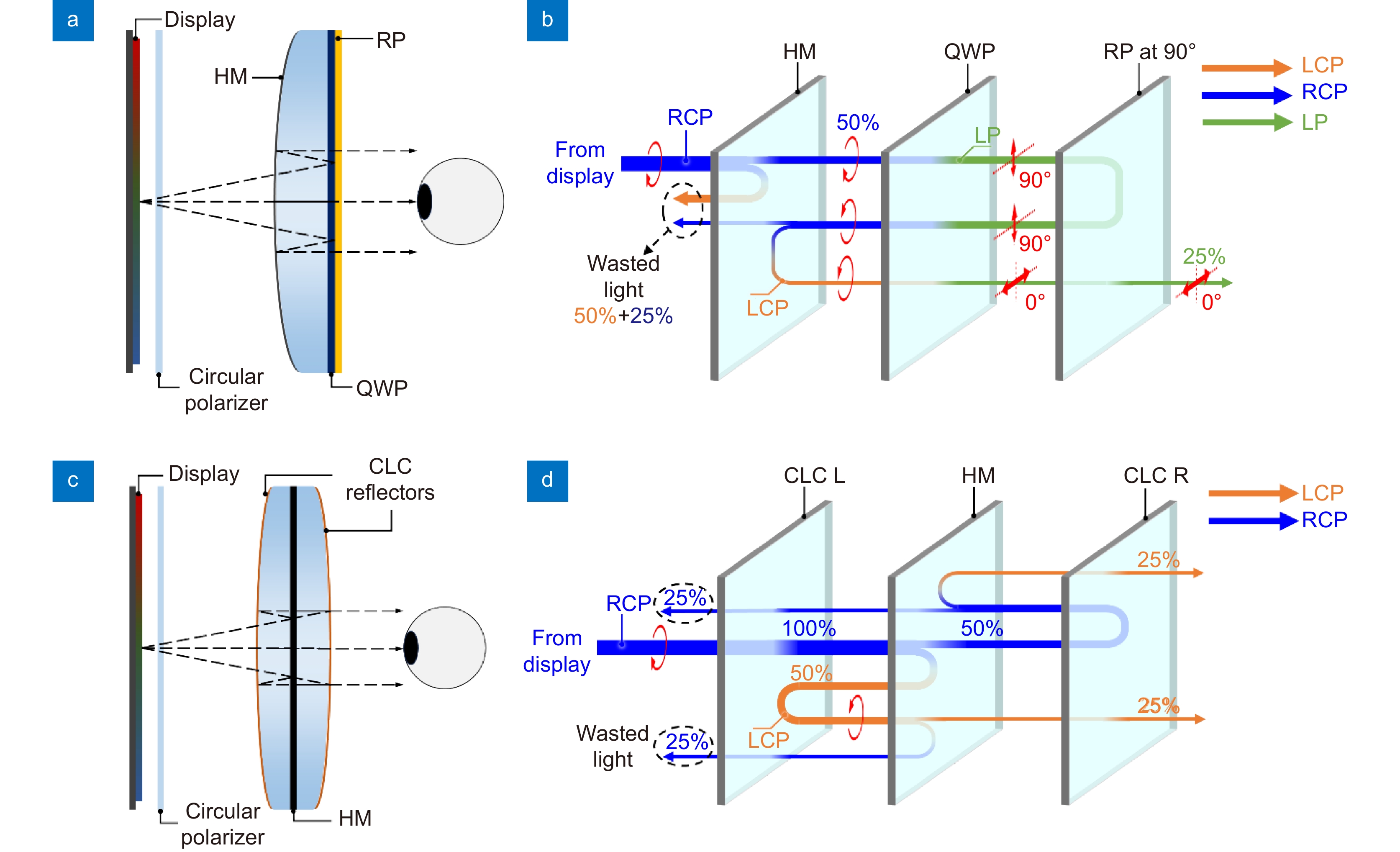

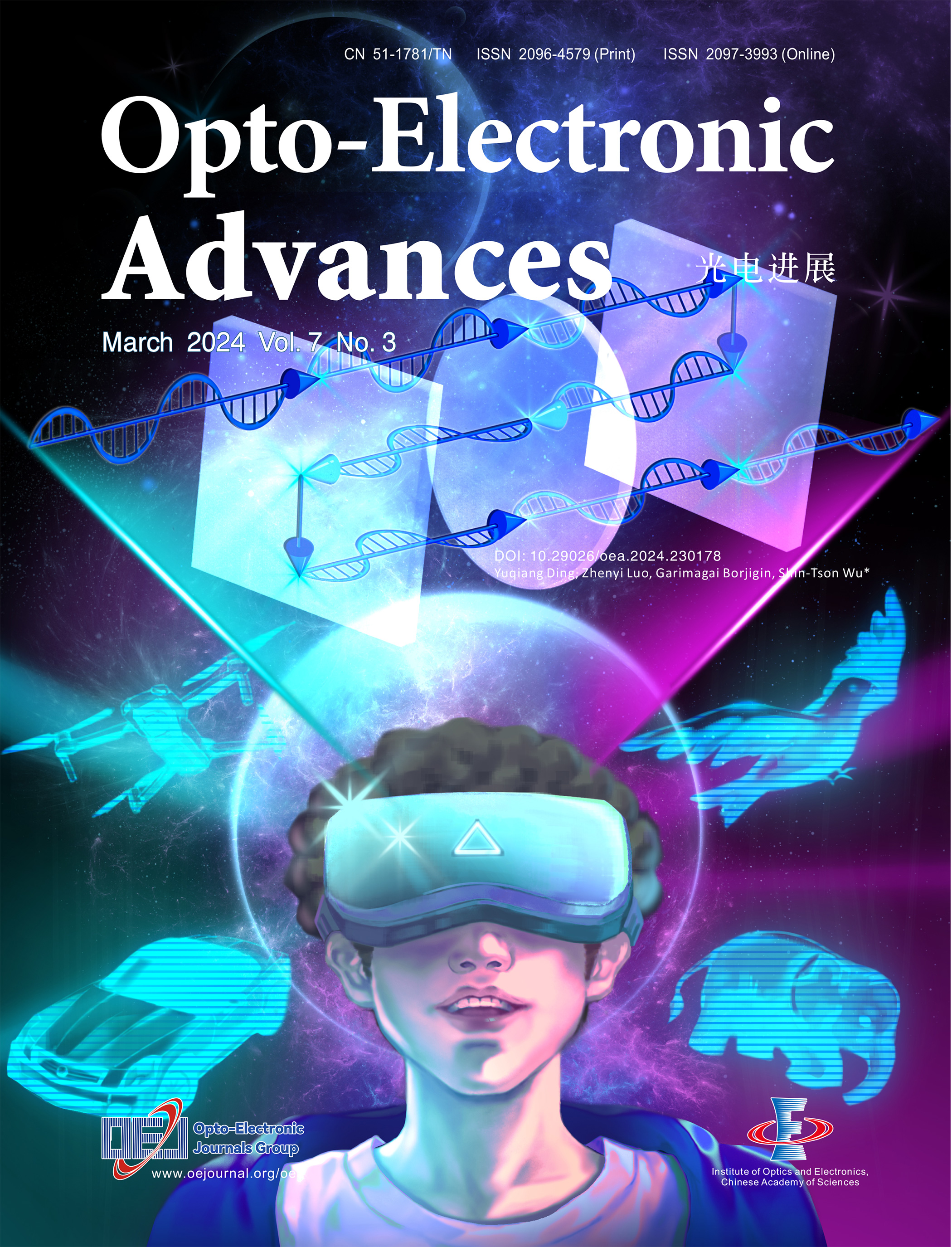
 DownLoad:
DownLoad:
